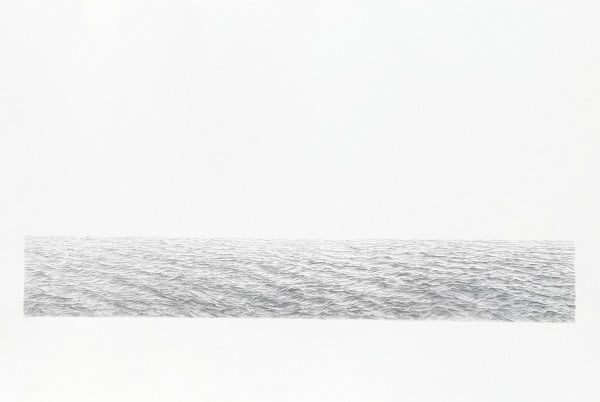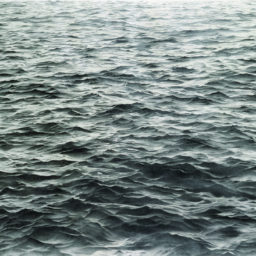The deeply meditative art of Latvian-born artist Vija Celmins has a strange power to transfix. Her work is uncanny in its intense attention to detail; she zooms in on the depth of the night sky or the dark rippling waves of the Pacific Ocean as if to magnify the world’s unknowable vastness.
Celmins’s family fled Latvia for America during World War II, when she was 10 years old. She emerged in the 1960s as a West Coast artist who produced eerily accurate images of humdrum objects. She then started making images of war-fighter jets and atomic explosions based on clippings she took from magazines, before moving onto her best-known subjects: the sky, the sea, and the stars. Celmins produces her meticulous work slowly and her longtime dealer Matthew Marks places it carefully to avoid speculation.
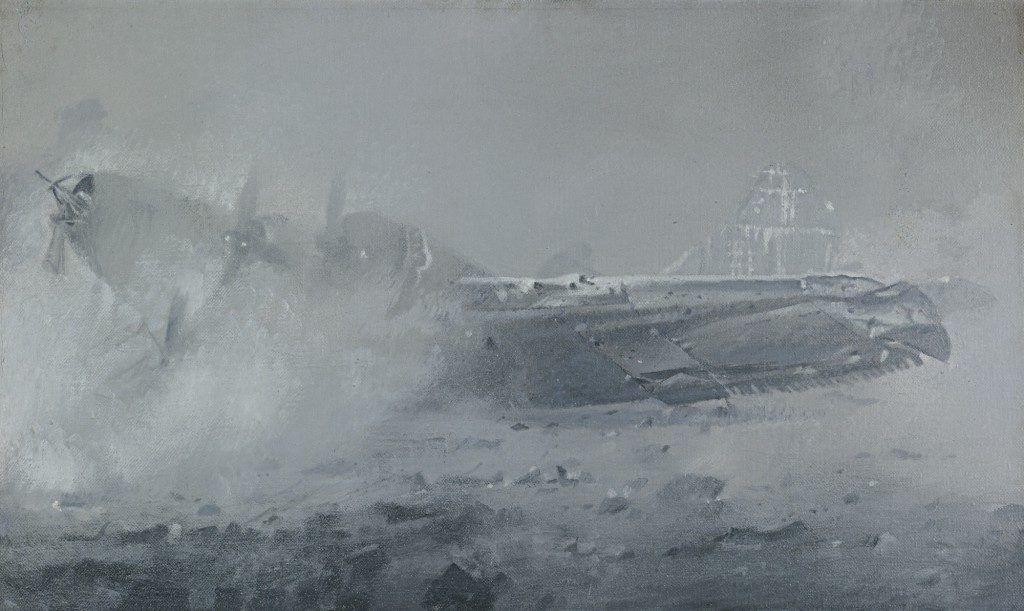
Vija Celmins, Burning Plane (1965). Courtesy Sotheby’s.
Cherished by critics, curators, and collectors alike, Celmins has nevertheless not had a major North American retrospective in more than 25 years. That changes this month, when an exhibition of more than 140 of her drawings, paintings, and sculptures, “Vija Celmins: To Fix the Image in Memory,” opens at the San Francisco Museum of Modern Art (through March 31) before traveling to the Art Gallery of Ontario and the Met Breuer in New York. This large survey follows a superb exhibition with Matthew Marks in 2017—her first show in seven years, and one that reminded those who had forgotten (and made aware those who were not) about the power of her art.
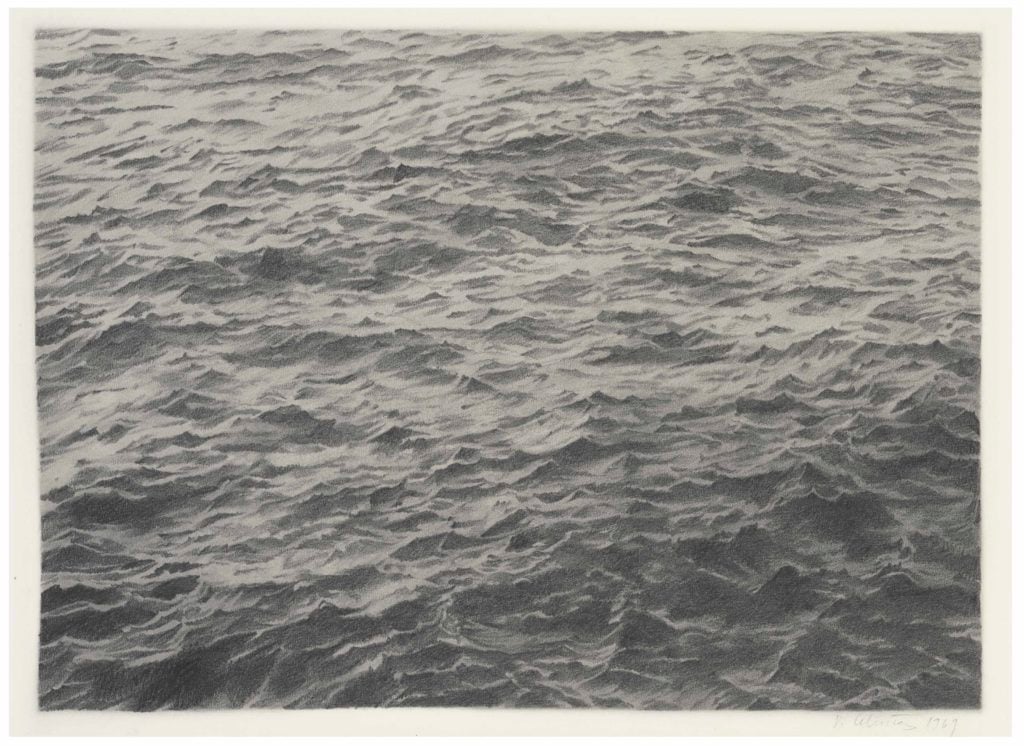
Vija Celmins, Lead Sea #2 (1969). Courtesy of Christie’s Images Ltd.
Perhaps in anticipation of the San Francisco museum show, the market for Celmins’s work has been busier of late. A new record was set last November when Lead Sea #2 (1969)—a work from her most desired series of drawings, those of the sea—sold well above its $1.5 million to $2.5 million estimate at Christie’s for $4.2 million. This bested the previous $3.4 million record set when Burning Plane (1965) sold at Sotheby’s in 2014, her most successful year at auction in terms of value and volume.
In total, 35 of Celmins’s works hit the auction block that year, all but one of which sold, for a total $10.7 million. This November, Christie’s included Star Field I (1981–2), one of her graphite drawings on paper of the night sky, in its evening sale, where it sold for $2.4 million with premium, doubling the high estimate of $1.2 million. Celmins’s top 10 auction prices have all been set in the past five years; the top 15 in the past seven.
There are other signs of increased interest, too. In 2010, for example, 10 Celmins works sold at auction, half for prices in the middle of their estimates; three below the low estimate; and two above the high. By contrast, so far this year, 38 of her works have sold—22 above the high estimate and two below the low estimate. (Three failed to sell.) Overall, demand has consolidated around work made in the 1960s, which accounts for six of her top 10 sales. Her photographs, meanwhile, seem to be the least in-demand medium, while her meticulous drawings are the most sought-after.
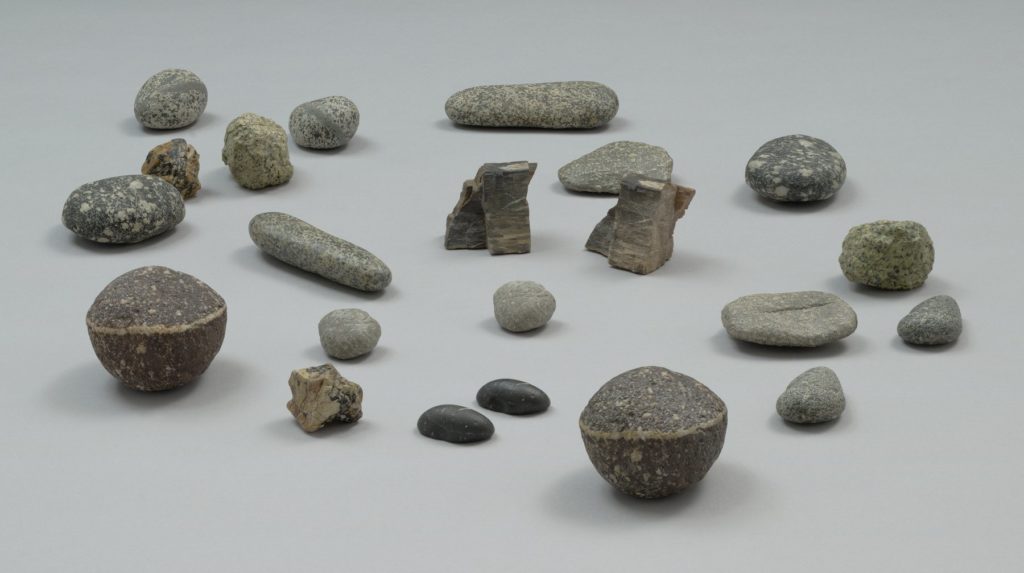
Vija Celmins, To Fix the Image in Memory I–XI (1977–82). © Vija Celmins; photo courtesy of Matthew Marks Gallery.
It might seem surprising that only 11 works by this artist—whose reputation is assured and who has more than 60 years of production behind her—have sold for more than $1 million. But it is worth bearing in mind that auction results only tell us about the works that actually come to auction.
Even privately, it can be difficult to get your hands on a Celmins. Gary Garrels, SFMOMA’s senior curator of painting and sculpture, told the New York Times last year that he had spent 30 years trying to increase museums’ holdings of Celmins’ work, but “it was tough, because dealers would tell you, ‘There’s just nothing available!’ And that was before her prices increased,” he said. “Now you really have to get yourself into a position to acquire if the opportunity comes.”
